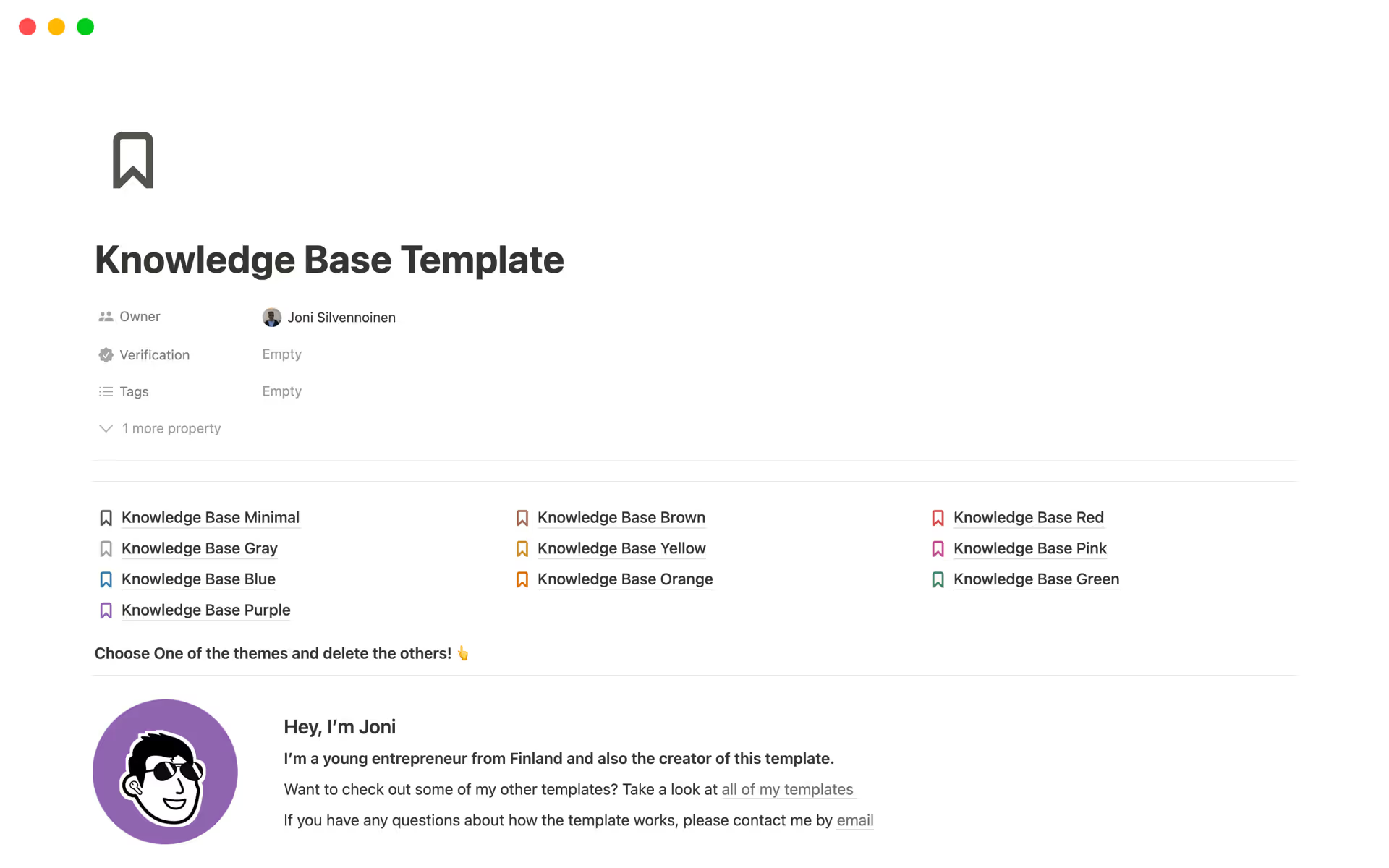7 Steps For an Effective Creative Agency Workflow
Implementing a sound workflow for your creative agency is a challenging ordeal. These 7 steps will take you through the process for healthy agency growth.




If you're running (or thinking about starting) a creative agency, structuring a standard workflow makes everyone's lives easier and enables long-term growth.
One of the issues agencies face is a constant "putting out fires" mode.
That usually stems from poorly-defined workflows.
Let me show you how to avoid that.
Before I take you through some of the steps to take for your own agency, let's imagine a scenario where you're running a website design firm that's been in business for around 1 year.
You've got your first 10 to 12 customers.
Everything is going great, but there's one major issue…
You're constantly running out of time.
This sounds pretty bad, but it's common in many small agencies.
Although a sound workflow can't fix all of the above (prices and customer expectations play a big role), it can cut the time you spend on things by 2—even 3 times. That's time you gain back to work on your agency, not in your agency.
In general, establishing a sound workflow for your creative agency means enabling it to become a healthy business that doesn't run out of time—at least for many years to come. There are a few rules to that, highlighted in the steps below.
Quick note: The steps below follow a typical agile philosophy: people before processes before tools. I find this approach the most effective in an agency environment. Steps 1 to 3 are on people, 4 to 6 on processes, and 7 on tools. If you want, you can skip to the appropriate sections.
If you already have 10 customers, and they support your current business operations, you've obviously done something right.
Don't discount their contribution even in times of tiresome slogging.

Instead, close doors for new clients until you figure out what doesn't work with current customers—this won't hurt your growth trajectory.
If you've been working with customers for a while, they'll have opinions on your work.
Ask them.
Even just these 3 questions will take you far. They'll tell you what the customer values the most, why they chose you against the competition, and where you need to focus to provide a better service for both existing and new customers.

Knowing this stuff is the equivalent of striking gold for a creative agency.
And I know it's hard to do, you're exposing yourself to judgment.
But the truth is, your agency isn't you.
Emotion only plays a role if you let it, and I have some good news…
Customers like to see services they use improve! They might not share it explicitly, but if they can be part of the process, they will lend a hand.
You know what the customer wants, but what about your team?
They're the ones doing the heavy lifting behind the scenes.
One of the most common ways creative agencies fail is decreasing quality and more lax delivery times. That's most often due to an overloaded team that needs to cut corners. It can also be due to a lack of quality control.
Your creative agency workflows all depend on people.
This is the main realization to make for effective improvement.

If you're only focusing on customers, you might be giving them what they want, but you're not considering what the toll of that service will be on your team members.
If you're doing the opposite, your team will deliver things the customer doesn't need because you haven't laid the ground rules first.
Both are ways to project failure.
Instead, ask your team what worries them before you make service changes:
Prepare these questions beforehand. You don't want to structure your creative agency workflow on random thoughts, you have to be empirical and consistent about it. Ask the same questions to everyone, both customers and team members.
Then, look at the replies and see if you can spot recurring trends.
Those are the priority items to fix.
It might sound counterintuitive, but the most important step in establishing a sound creative agency workflow isn't the project milestones or the detailed briefs.
It's charging the right prices.
The process—both pre- and post-purchase—is anchored in the price.

So, if you price things right, the process is shaped accordingly.
There are 3 common issues with creative agency pricing:
First, it's easy to sign contracts early on that get your foot in the door, but eventually leave you with a dry mouth. You're contractually obligated to deliver, but you know you're not getting any substantial benefitfrom it.
This is a killer for agencies, and the primary reason why you run out of time (and money). Plus, a "contract" isn't just a written document, it can be a verbal agreement too, or a monthly retainer.
Generally, you don't want agreements to run forever, or indefinitely.
And you definitely don't want to work on verbal agreements—write things down.
Second, if an engagement is profitable, you need to keep it that way.
Customers will ask you for favors or additional services from time to time—make it clear it'll need a contract amendment from the get go.
Either way, you won't lose the customer.
Third, and importantly, you need to increase your prices over time.
As a more established creative agency, it doesn't make sense to charge the same as you were charging in the first few months.
It's hard to imagine how much this facilitates your workflow until you do it:
If a previously unprofitable customer doesn't agree with the new contract terms, don't sign them again unless you have a specific way of maintaining profits as part of the new workflow. Now, off to the process side of things.
Even if you don't have any formal procedures, assigning roles and communicating what needs to be done is the name of the game.
This is where every fruitful collaboration starts.
At this stage of the workflow, you just want to be there for your team:
And, unless you're a 100+ people company, don't go on a standardization hunt with process diagrams and crazy complex flow charts.
Start by giving specific jobs to complete.

Let the team members break them down into individual tasks.
When they have questions, reply to them with a short video and place it in your company's knowledge library (e.g. Notion).
If it comes up again, simply share the video again.
It's important not to make these videos too long or they won't be reusable.
Agency software like ManyRequests can help streamline this entire process with tasks that are directly connected to customer projects and inline team communication.
Ah, the good 'ol project management conversation.
You can't talk about "workflow" without talking about Kanban boards.

These intuitive drag-and-drop columns emerged as the absolute winners of the project management software rush of the 2010s, starting with Trello in 2011/12.
I'm mentioning Kanban boards here specifically because they've proven time and time again to be some of the most effective ways of managing creative projects.
With a Kanban board, you can set your own project stages and have the team follow them almost religiously—it's a workflow builder, making it easy to just get started.
But of course, Kanban boards aren't the only way to manage things:
Whatever task management style best suits you, it's best to pick one and stick to it.
The worst thing to do is train your team on one method and then switch it.
But what should you include as "tasks" in these powerful tools?
» Customer requests, paired with creative briefs for team members.
You want to add all the context of the customer's brand and business objectives, plus the technical aspects of getting the job done.
How many pages for a website, what style, is there a template that can be reused, does the customer have a preferred content management system, etc.

In software tailored to creative agencies like ManyRequests, customer projects (i.e. "requests") are paired directly to creative briefs, making the entire platform a big to-do list / Kanban board.
Once everyone is on board and using the same views and tooling, templatize your tasks and—when customers request the same services—re-use the same templates again and again. This will reduce admin time immensely (usually by 2-3x).
I had my own (tiny) creative agency at one point. Once I got to the 15 customer mark, I realized I had a big quality control issue ahead of me.
I simply couldn't keep up with demand anymore, and what I charged wasn't enough to make up for an additional step in the process (going back to step #3—charge more over time). Quality was decreasing and I couldn't do much about it.
At first you might feel this is not a necessary step—you know the quality of the work your team does. You've seen it firsthand. But that's always and only until demand is manageable. Investing in a quality control workflow early does 2 things:
Plus, once a standard quality control process is in place, you can always scale it up and down as needed. Quality is rock-solid on one service front? Re-allocate QA to a less mature service (but keep an account manager vigilant).
Jumping into complex tools before you have a sound process is a mistake. I know because I made this mistake several times, investing in expensive software like HubSpot (~$800 / mo in my case) before I could even leverage 10% of it.

But this is all dependent on cost and complexity.
If the benefit of implementing a process directly into a tool from the get go only costs you your time and a small group of people's training, plus a reasonable subscription fee—then it's worth it.
Some of the capabilities you'd be looking for as a creative agency are:
My recommendation is, try to keep all of these in 1 place. There's more tools around than ever today, and low feature adoption is a real issue (even looking 4 years back).
Basically, most agencies are paying for things they don't use.
Instead of wasting resources like that, think long and deep about whether each part of a particular platform will serve your needs.
Software like ManyRequests was built specifically around the needs of creative agencies, and can be adopted from A to Z without the need of external tools.
If you're looking to implement a standard workflow for your agency, your ultimate goal is to enable sustainable, healthy creative operations.
Stay fixated on that point.
You'll find it easier to implement a productive workflow when you focus on things like customer feedback, team nurturing, and pricing strategy.
They make the bigger impacts.
Then:
Those are your processes and tools.
And even though they're last in the list, tools make a big difference too, especially if they manage not just the "efficiency" stuff, but also the agency operations stuff.
That's exactly what ManyRequests does.

It covers all points in this list, from step 1 to step 7:
All of this is enough to start, grow, and operate a successful creative agency.